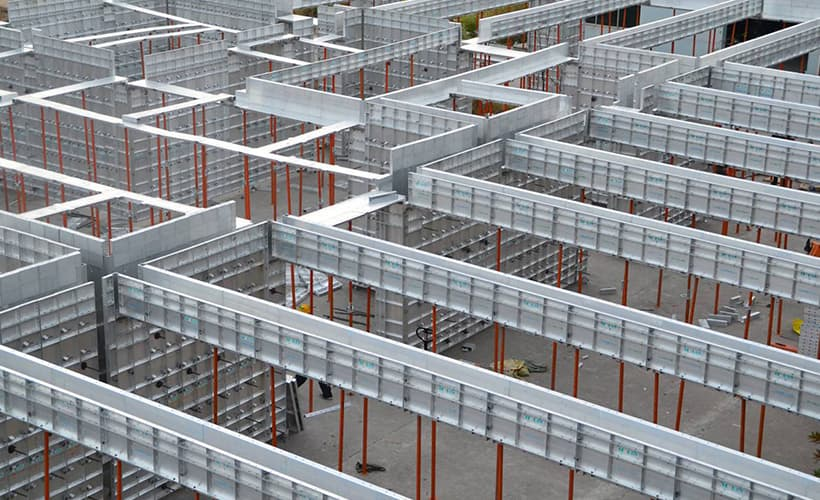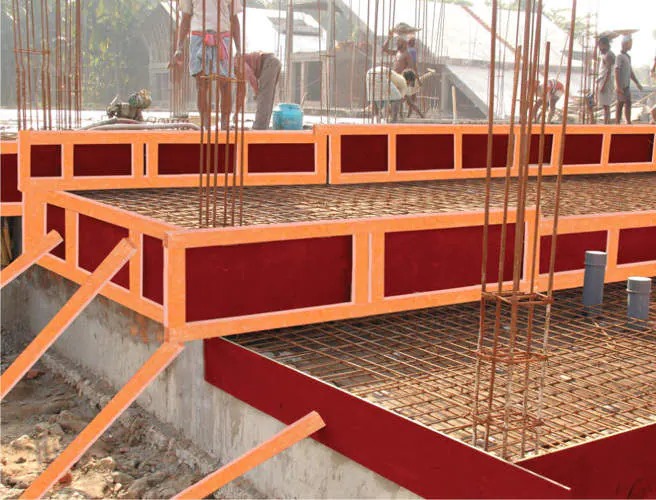Introduction
In Pakistan’s construction industry, shuttering (formwork) is one of the most critical elements for shaping concrete and ensuring structural strength. The choice between plywood shuttering and steel/aluminum shuttering often creates debate among builders, engineers, and homeowners. Each option has its advantages depending on the scale, budget, and requirements of the project.
At Gemcon Engineering, we frequently encounter this question from our clients: Which shuttering material is best for my construction project? This blog will provide an in-depth comparison of plywood, steel, and aluminum shuttering, helping you make an informed decision.
What is Shuttering in Construction?
Shuttering, or formwork, is a temporary mold into which concrete is poured. It defines the shape, size, and finish of concrete structures such as beams, slabs, and columns. The quality of shuttering directly impacts the surface finish, strength, and durability of the final structure.
There are different materials used in shuttering, but the most common in Pakistan are:
- Plywood Shuttering
- Steel Shuttering
- Aluminum Shuttering
Plywood Shuttering
Advantages
- Cost-Effective: Plywood shuttering is cheaper than steel and aluminum, making it an attractive option for small to medium-scale projects.
- Easy Handling: Lightweight and easy to cut, plywood can be adjusted to different shapes and sizes.
- Good Surface Finish: With the right quality of plywood, you can achieve a smooth concrete surface.
- Readily Available: In Pakistan, plywood is easily accessible in local markets.
Disadvantages
- Limited Reusability: Plywood shuttering can only be reused 5–6 times, depending on quality.
- Less Durable: Exposure to moisture can weaken plywood, making it unsuitable for long-term or repeated use.
- Inconsistent Quality: Local plywood often varies in strength and thickness, which may affect structural accuracy.

Steel Shuttering
Advantages
- High Strength & Durability: Steel shuttering can be reused up to 100 times, making it highly cost-efficient in large projects.
- Uniform Shape & Size: Provides accurate dimensions and consistent concrete finishes.
- Moisture Resistance: Unlike plywood, steel does not absorb water, ensuring better durability.
- Ideal for High-Rise Projects: Used extensively in large commercial and residential buildings.
Disadvantages
- Expensive Initial Cost: The upfront investment is significantly higher compared to plywood.
- Heavy Weight: Requires skilled labor and sometimes machinery to handle, increasing labor costs.
- Corrosion Risk: If not properly maintained, steel shuttering may rust over time.

Aluminum Shuttering
Advantages
- Lightweight: Easier to handle compared to steel shuttering.
- Reusable: Can be reused up to 250 times, making it highly cost-effective in the long run.
- Speed in Construction: Its modular system allows faster assembly and dismantling.
- Smooth Finishes: Provides a high-quality surface finish with minimal plastering required.
Disadvantages
- High Initial Investment: More expensive than both plywood and steel.
- Limited Flexibility: Difficult to modify on-site for custom designs.
- Requires Skilled Labor: Specialized training is needed to handle aluminum formwork properly.
Comparison Table
| Feature | Plywood Shuttering | Steel Shuttering | Aluminum Shuttering |
| Initial Cost | Low | Medium-High | High |
| Reusability | 5–6 times | Up to 100 times | Up to 250 times |
| Durability | Moderate | High | Very High |
| Surface Finish | Smooth (depends on quality) | Very Smooth | Excellent |
| Weight | Light | Heavy | Light |
| Flexibility | High (easy cutting) | Moderate | Low |
| Best For | Small projects | High-rise projects | Large-scale projects |
Which Shuttering is Best for Pakistan?
- For Residential Houses: Plywood shuttering is a good choice due to affordability and flexibility.
- For Medium to Large Projects: Steel shuttering provides durability and cost-efficiency with multiple uses.
- For Mega Projects & Developers: Aluminum shuttering is the most efficient option for speed, quality, and long-term reuse.
At Gemcon Engineering, we recommend choosing the shuttering type based on project size, budget, and expected construction timeline. Our team ensures that whichever material is used, it meets international safety and quality standards.
Conclusion
The debate between plywood, steel, and aluminum shuttering ultimately depends on the type of project and financial considerations. Plywood offers flexibility and affordability, steel brings durability and accuracy, while aluminum ensures efficiency and long-term savings.
If you’re planning a construction project in Pakistan and want expert guidance on shuttering choices, Gemcon Engineering can help. We specialize in construction services, ensuring that every project is executed with precision, durability, and quality.

